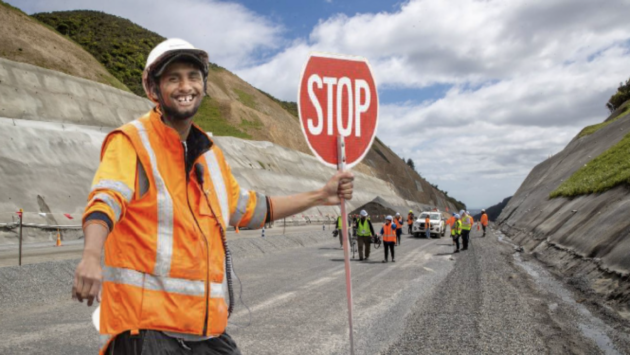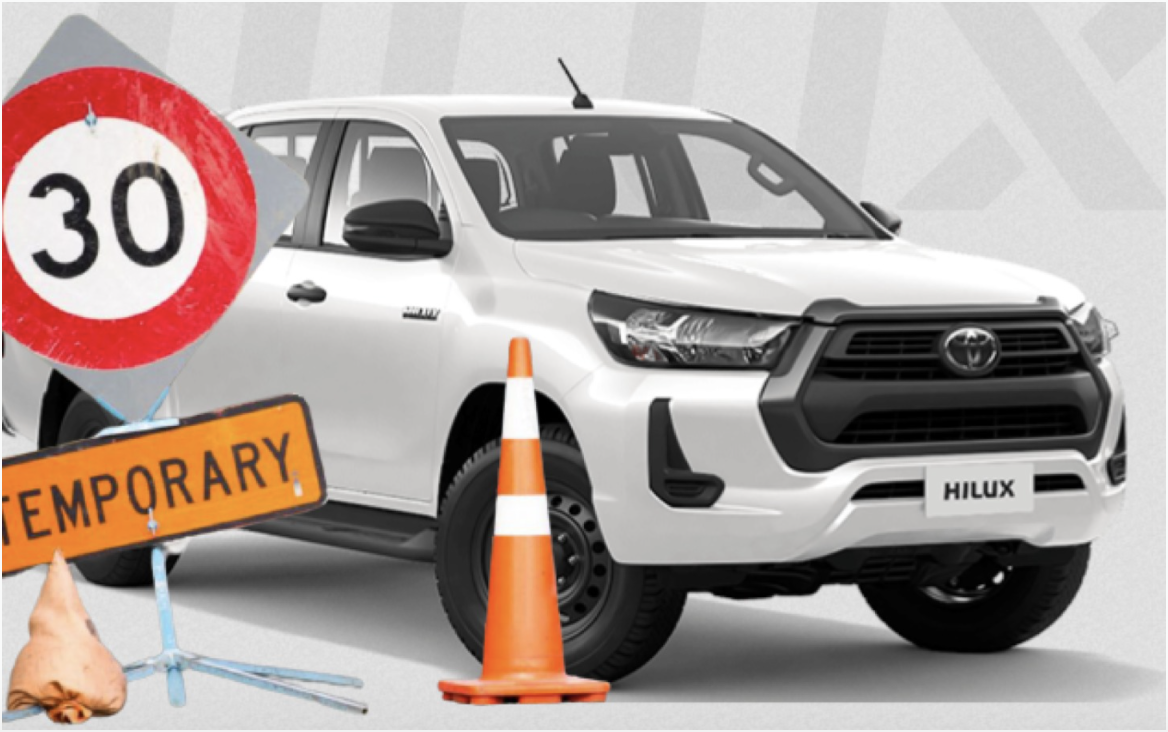Karl du Fresne
karldufresne.blogspot.com
I’ve figured out who the wealthiest man in New Zealand is. It’s not a property developer or a software billionaire or a dairy industry mogul. It’s the bastard who makes those orange-and-white traffic cones.
You can’t drive more than 10 kilometres in any direction without encountering thickets of these cones, often sprouting in circumstances where there’s no obvious justification for them. Every time I see them, I hear the sound of a cash register going “ker-ching!”
I wish I’d bought shares in the company. They must rank with Tesla, Amazon and Apple in terms of value growth.
In the BTC (before traffic cones) era, New Zealand managed to build a national highway network with just a bloke standing at each end of a road construction job with a roll-your-own in one hand and a “Stop” sign in the other.
Not anymore. No job, whether it’s mowing a grass verge or filling in a couple of potholes, is so minor that it doesn’t require truckloads of men in high-vis vests laying out rows of traffic cones and other safety appurtenances lest a feckless motorist causes carnage.
And we mustn’t forget the traffic control trucks that cruise back and forth with their giant flashing arrows. Observation has led me to suspect that the traffic control trucks which patrol the Hutt motorway – closing lanes, laying down endless lines of cones and forcing traffic to slow to a crawl – sometimes do so not because of any actual work in progress, but out of sheer devilment. And there always seems to be more than one bloke in the cab, no doubt so that someone can take over if the driver collapses from the sheer stress and exhaustion of it all.
It should never be assumed that the presence of cones signifies actual work being done. Sometimes they denote a project already completed or intended to be tackled at some indeterminate point in the future.
Often they are accompanied by speed restrictions whose purpose is similarly unclear. How many times have you seen a sign instructing you to slow to 50 kph on a stretch of road where whatever work was supposedly underway had long since been finished – or alternatively, had yet to start – and any need for reduced speed had either passed or hadn’t yet arisen? And how many times have you passed a sign saying “Works End” when there was nothing to indicate they had started?
Small wonder that motorists have learned to ignore such signs, recognising there’s often no justification for them. The danger, of course, is that they will treat speed restriction signs with contempt even where they have been put in place for a good reason.
But those traffic cones are simply a manifestation of a bigger and more puzzling phenomenon. I call it the white ute syndrome.
Observe any major highway construction project and the first thing you notice is the number of white utes with flashing lights. Most of these vehicles are stationary and apparently doing nothing. Someone drives them to the job in the morning and home again at night, but I wonder what they do in between to justify the expense. Four-wheel-drive utes don’t come cheap, after all, and they’ll cost even more after Labour’s diesel tax starts to bite.
The second thing you notice is the legions of men (and very occasionally a woman) in high-vis vests standing around doing … well, not much at all.
The third thing you’re likely to notice is that you can drive past one of these major highway construction sites at regular intervals over weeks or months and see little or no evidence of progress. This has led me to conclude that New Zealanders have become the world’s least efficient roadbuilders.
For years I’ve travelled every few weeks between the Wairarapa and the Kapiti Coast. This has enabled me to observe progress – or the lack of it – on the Transmission Gully expressway and more recently the Haywards Hill (State Highway 58) safety upgrade. I have plenty of time to do this because traffic is routinely reduced to a crawl over a stretch of several kilometres.
Progress on both projects has proceeded at a glacial pace. I look in vain for any evidence that work has advanced since I last passed through, but mostly what I see is more traffic cones arranged in ever-changing configurations.
One constant, however, is that there are always plenty of white utes with flashing lights and lots of blokes in high-vis vests standing around.
Make no mistake, Transmission Gully will be a fantastic asset when it’s completed, but it has become a byword for delays and cost overruns. Originally budgeted at $850 million, it’s now past $1.25 billion and climbing. Meanwhile the completion date – originally April 2020 – has been pushed out to the end of next month, and only the most deluded optimist expects it to be achieved.
It will then be six years since construction began. A small point of comparison: the Suez and Panama canals were built in 10 years.
Okay, Transmission Gully is a big, complex project on difficult terrain, and it was disrupted by earthquakes and Covid-19. But an independent inquiry identified multiple flaws in the way it’s been managed and the New Zealand Transport Agency, as the public partner responsible for spending the taxpayers’ dollars, must ultimately carry the can.
Could there be a less competent government department? Almost everything the NZTA gets involved in turns pear-shaped.
All of this raises an intriguing question. I’m old enough to remember when the Ministry of Works and Development successfully undertook some formidably challenging highway construction jobs. The Napier-Taupo road – once fiendishly dusty, twisty and hard on gearboxes, brakes and radiators – was one. Another was the Mangaweka/Taihape stretch of SH1.
It beggars belief that they were built without the benefit of white utes, high-vis vests and traffic cones. How the hell did they do it? Whatever their secret, those old-school MWD engineers and roading contractors must have carried it to their graves.

Please share so others can discover The BFD.

